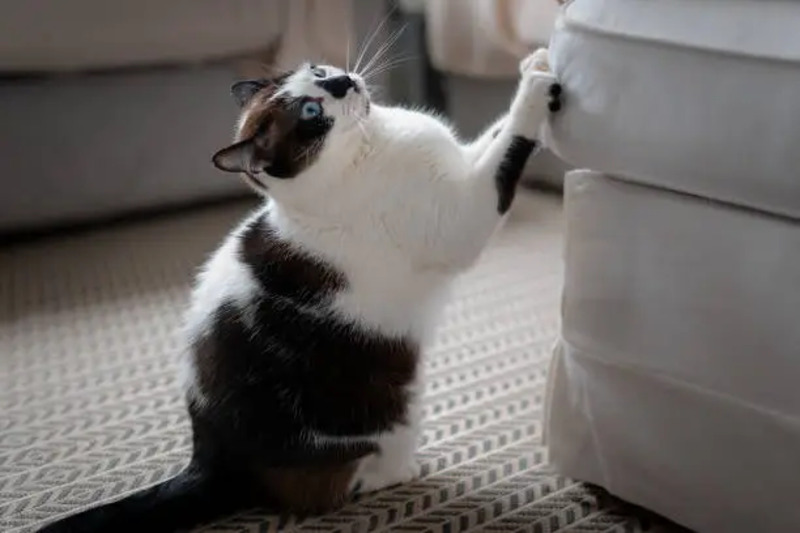
Stop the Scratching: How to Keep Your Cat from Destroying Furniture
Published on June 26, 2025
For cat owners, the sight of shredded furniture can be incredibly frustrating. While it might seem like your feline friend is deliberately trying to ruin your sofa, scratching is a natural, essential, and instinctual behavior for cats. They scratch to maintain their claws, stretch their muscles, mark their territory (both visually and with scent glands in their paws), and relieve stress. The key to protecting your furniture isn't to stop them from scratching, but to redirect this natural behavior to appropriate surfaces.
This guide will provide you with effective strategies to save your furniture and keep your cat happy and healthy.
Understanding Why Cats Scratch
Before you can redirect the behavior, it helps to understand its purpose:
- Claw Maintenance: Scratching removes the dead outer layers of their claws, keeping them sharp and healthy.
- Stretching: It allows them to stretch their bodies, especially their back and shoulder muscles.
- Territorial Marking: Cats have scent glands in their paws, leaving their unique scent on surfaces they scratch. Visual marks also signal their presence.
- Stress Relief: Scratching can be a way for cats to relieve anxiety, excitement, or frustration.
1. Provide Appealing Scratching Alternatives
The most crucial step is to offer scratching posts and surfaces that are more appealing than your furniture. Cats have preferences, so you might need to experiment:
- Material: Sisal rope, cardboard, carpet, wood. Many cats prefer sisal or corrugated cardboard.
- Orientation: Vertical (posts) for stretching, horizontal (pads) for ground scratching. Some cats prefer one over the other.
- Height/Length: Vertical posts should be tall enough for your cat to stretch to their full height.
- Stability: The post must be sturdy and not wobble, or your cat won't use it.
- Location: Place scratching posts in prominent areas where your cat already spends time, especially near their sleeping areas or where they currently scratch furniture.
2. Make Furniture Unappealing
While providing alternatives, simultaneously make your furniture less attractive for scratching:
- Texture Deterrents: Cover scratched areas with materials cats dislike, such as double-sided sticky tape (e.g., Sticky Paws), aluminum foil, sandpaper, or plastic sheeting.
- Scent Deterrents: Spray citrus-scented sprays (cats dislike citrus) or commercial deterrent sprays on furniture. Always test a small, inconspicuous area first to ensure it doesn't stain.
- Physical Barriers: Place blankets or throws over the furniture temporarily.
3. Encourage Use of Scratching Posts
Positive reinforcement is key. Never punish your cat for scratching furniture, as this will only create fear and anxiety. Instead:
- Lure Them: Sprinkle catnip on the scratching post, hang toys from it, or rub a favorite treat on it.
- Praise and Reward: When your cat uses the post, praise them enthusiastically and offer a treat or playtime.
- Gentle Redirection: If you catch them scratching furniture, gently pick them up and move them to the scratching post.
4. Regular Nail Trims
Keeping your cat's nails trimmed regularly can reduce the damage they inflict. This doesn't stop the scratching behavior, but it makes it less destructive. If you're uncomfortable trimming nails yourself, your vet or a professional groomer can do it.
5. Consider Soft Paws (Nail Caps)
Soft Paws are vinyl caps that are glued onto your cat's claws. They effectively blunt the claws, preventing damage to furniture. They typically last 4-6 weeks and fall off as the cat's nails grow. They are a safe and humane option, especially for cats that are resistant to other methods.
Consistency is Key
Changing a cat's scratching habits takes time and consistency. Be patient, provide plenty of appropriate alternatives, make the furniture undesirable, and always use positive reinforcement. With persistence, you can successfully redirect your cat's natural scratching instincts and protect your home.